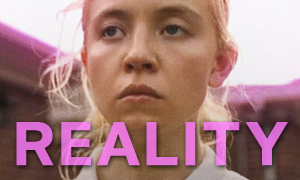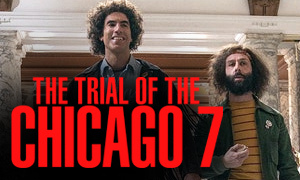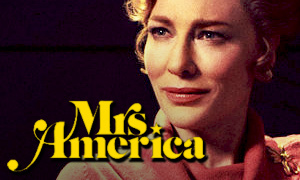Woman in Gold: History vs. Hollywood
| REEL FACE: | REAL FACE: |
Helen Mirren
Born: July 26, 1945 Birthplace: Chiswick, London, England, UK | Maria Altmann
Born: February 18, 1916 Birthplace: Vienna, Austria Death: February 7, 2011, Los Angeles, California, USA |
Tatiana Maslany
Born: September 22, 1985 Birthplace: Regina, Saskatchewan, Canada | Maria as a Young Lady
|
Nellie Schilling
Born: September 8, 2005 Birthplace: Vienna, Austria | Maria as a Child
|
Ryan Reynolds
Born: October 23, 1976 Birthplace: Vancouver, British Columbia, Canada | Randol "Randy" Schoenberg
Born: September 12, 1966 Birthplace: Los Angeles, California, USA |
Katie Holmes
Born: December 18, 1978 Birthplace: Toledo, Ohio, USA | Pamela Schoenberg
Born: September 23, 1969 |
Daniel Brühl
Born: June 16, 1978 Birthplace: Barcelona, Barcelona, Catalonia, Spain | Hubertus Czernin
Born: January 17, 1956 Birthplace: Vienna, Austria Death: June 10, 2006, Vienna, Austria (mastocytosis) |
Antje Traue
Born: January 18, 1981 Birthplace: Mittweida, Saxony, East Germany | Adele Bloch-Bauer
Born: August 9, 1881 Birthplace: Vienna, Austria Death: January 24, 1925, Vienna, Austria (meningitis) |
What is the original title of the gold-flecked painting?
In researching the Woman in Gold true story, we discovered that Gustav Klimt's 1907 painting was originally titled "Portrait of Adele Bloch-Bauer I," named for the woman who posed for it, Maria Altmann's Aunt Adele. It was the first of two portraits that Klimt painted of Adele. The second was fittingly titled "Portrait of Adele Bloch-Bauer II" and was completed in 1912.
Was the painting's title really changed to "The Woman in Gold"?
Not exactly. Bruno Grimschitz, the Nazi curator at the Austrian Gallery, first changed the name of the painting to "Golden Portrait" and later to "The Lady in Gold." As emphasized in the movie, this was done to hide the fact that the woman in the painting was Jewish. -Variety.com
Is it possible that Adele Bloch-Bauer was Gustav Klimt's lover?
Yes, however, there has been nothing to confirm this. "When I asked my mother, 'Did Adele have a relationship with Klimt?' she said, 'How dare you ask such a question? It was an intellectual friendship.' But my mother would always say that," admits the real Maria Altmann, "even when she was 100% sure that the people had more than an intellectual friendship. At the time, [people] had their affairs and didn't discuss it." -The Lady in Gold Documentary
How long did it take Gustav Klimt to complete the painting?
The gold-flecked painting of Adele Bloch-Bauer took artist Gustav Klimt three years to complete, with his preliminary drawings dating back to approximately 1903 or 1904. The complex finished portrait consists of oil, silver, and gold on canvas.
When did Maria Altmann first seek to reclaim her family's paintings?
Maria launched her efforts to reclaim some of her family's paintings in 1998 at the age of 82, as indicated in the Woman in Gold movie. It was then that Maria learned that her family's paintings had been stolen by the Nazis, not donated to the Austrian State Gallery by her aunt.
The odds of restitution were improving at the time due to post-Cold War revelations regarding Nazi plunder. Swiss banks had agreed to a $1.25 billion settlement after being sued by Holocaust survivors for refusing to return assets deposited during the war for safekeeping. That same year, the Washington Principles on Nazi-Confiscated Art was signed by 44 countries, including Austria. The Austrian Parliament also passed its own law requiring museums to allow researchers to explore their archives in order to get plundered items back to their rightful owners.
The new Austrian legislation was prompted in part by articles published by Hubertus Czernin, portrayed by Daniel Brühl in the film. After the Austrian Gallery archives had been unsealed, Czernin discovered that Austria's claim to the Bloch-Bauer Klimt paintings was faulty. It wasn't long before Maria learned of Czernin's discovery. -NYTimes.com
Yes, the subject of the famous Klimt painting, Adele Bloch-Bauer, died from meningitis in 1925 at age 43. To learn more about Adele, artist Gustav Klimt, and the painting's journey through history, read Anne-Marie O'Connor's book The Lady in Gold: The Extraordinary Tale of Gustav Klimt's Masterpiece, Portrait of Adele Bloch-Bauer. It goes into more depth than the movie, following the painting into the hands of the Nazis and then focusing on Maria Altmann's legal battle to reclaim it from the Austrian government.
Did the Nazis take more than just the Klimt paintings from Maria's family?
Yes, like in the movie, when they raided Maria's family's home they also took jewelry, her father's Stradivarius cello, and various other paintings. The most valuable of these was the gold leaf 1907 portrait of Maria's Aunt Adele. "They just came and took things," says the real Maria Altmann. "They didn't ask you. They just rang the doorbell and I opened it and there they were. They were not in uniform because it was Gestapo and they didn't wear uniforms" (The Lady in Gold Documentary). "My father died two weeks after that; it was absolutely a broken heart — he died of a broken heart" (Telegraph).
Did Hermann Göring's wife really end up with the diamond necklace worn by Adele in the painting?
Yes, surprisingly, this is true. Our research into the Woman in Gold true story confirmed that the stunning diamond necklace worn by Adele in the Klimt portrait was taken by Luftwaffe commander Hermann Göring. His wife Emmy wore it to lavish Nazi parties. -Mirror Online
"They immediately asked me for my jewelry, which I had just gotten from my uncle for my wedding present," says Maria Altmann of the Gestapo's 1938 visit to her family's home. "It was Adele's beautiful diamond necklace with the earrings to match. That went to Mrs. Göring." -The Lady in Gold Documentary
Did Maria and Fritz really have trouble getting passports?
Maria had a valid passport and visas for entry into France and England but her husband Fritz didn't, so she chose to stay by his side and help him escape. They had been married for only ten months. "My wife's passport was quite in order, but she would not let me try to escape alone," said Fritz. "My passport had been taken away from me, which of course, added to my difficulties." -SchoenBlog.com
Did Maria and her husband Fritz escape their guard while they were at the pharmacy?
No. Maria's husband Fritz told his guard that he needed to see the dentist. The nail-biting escape through the streets is movie fiction, although Fritz's brother Bernhard did suggest possibly losing a guard by taking him to the Bristol Hotel and having him wait in the hall while Fritz slipped out through the hotel's bar entrance. They had tried to escape three times before they were finally successful. -SchoenBlog.com
With the assistance of Fritz's brother Bernhard and his friends, Maria and Fritz did eventually board a plane to Cologne. From there they made their way across the Dutch border and eventually to Liverpool. The escape did have its tense moments, which included avoiding German border guards and Maria tearing her stockings and calves on a barbed-wire fence (SchoenBlog.com). As the British were growing more suspicious of Austrians, Germans and Italians living in Britain, Maria and Fritz decided to head to America (Mirror Online).
The movie omits events prior to this, when Maria's husband Fritz was arrested by the Nazis and held at the Dachau concentration camp for nearly two months in order to force his brother Bernhard, who had already escaped to France, to transfer his prosperous Bernhard Altmann textile factory into German hands. "They released him when my brother-in-law signed over the factory to them," says Maria Altmann. "He was brought home, the head was shaved, he looked awful" (The Lady in Gold Documentary). Fritz was then put on house arrest for three months up until his escape, because the Nazis were unwilling to let him go free until they had gotten every last penny out of his brother (SchoenBlog.com).
Just prior to boarding the plane during their escape, did officials come looking for two passengers from Vienna?
The Woman in Gold true story reveals that it was a stewardess who asked the group if there were two passengers from Vienna. Maria and Fritz did not answer. Unlike the movie, they did not witness German officers taking two other people away. -SchoenBlog.com
Did Adele Bloch-Bauer leave the paintings to Austria in her will?
Yes, but the paintings (2 portraits and 4 landscapes by Klimt) were not to be given to Austria at the time of her death. She specified in her will that the paintings were to be left to her husband and asked that he donate them to the Austrian State Gallery upon his death, to be put on display in the Belvedere Palace, Austria's prestigious national gallery. However, Adele's husband, wealthy sugar magnate Ferdinand Bloch-Bauer, did not die until 1945, and by that time the paintings had already been stolen by the Nazis. German attorney Friedrich Führer administered their sale on behalf of the German state, and in 1941, the Austrian State Gallery acquired the Klimt paintings. For the majority of the 60 years that followed, "The Lady in Gold" would hang in the Belvedere Palace in Vienna. -NYTimes.com
Ferdinand's own will stated that his estate, including the Klimt paintings, was to go to his heirs. He reasoned that the Klimt paintings were in fact his since he had paid for them. His will stated that all previous testaments concerning the paintings were to be null and void, including his late wife's will. For a closer look at many of Gustav Klimt's paintings and to get an introduction to his work, read the book Klimt (Taschen Basic Art Series) pictured below.
Is the real Randy Schoenberg the grandson of a famous composer?
Yes, Randy Schoenberg, portrayed by Ryan Reynolds in the movie, is the grandson of Jewish composer and painter Arnold Schoenberg, whose music was labeled "degenerate" by the Nazi Party's cultural arm. After being warned that it would be unsafe to reside in Germany, Arnold fled Europe via Paris and came to America in 1933, eventually settling in Los Angeles, where he became a teacher at the University of Southern California before teaching at the University of California at Los Angeles. -Britannica.com
Did lawyer Randy Schoenberg really quit his job at a big firm to help Maria full-time?
Yes, like in the movie, the real Randy Schoenberg was a friend of Maria's family. With one child and a second on the way, Randy quit his job at a major law firm to devote his full attention to Maria Altmann's case. "I knew we were right, but I could never be really confident we would win because of what we were up against," says Randy. "I think the Austrian lawyers and officials had a soldier's mentality. They told themselves they were doing their duty to Austria." -Mirror Online
How did Randy make money while he worked on Maria's case?
After quitting his job, Randy says that he made only $20,000 the first year he worked on Maria's case, scraping together money from other cases he worked on the side. However, the movie omits the fact that after that first year, Randy joined a partnership that gave him a salary and the freedom to go after the Klimt paintings. -LATimes.com
Did the Austrian government really deny Maria's initial claim to the paintings?
Yes, like in the movie, Viennese lawyers did everything they could to prove that Maria Altmann had no legal claim to the art that had been stolen from her family. "They will delay, delay, delay, hoping I will die," the real Maria Altmann stated at the time. "But I will do them the pleasure of staying alive." -Mirror Online
What is Gustav Klimt's most famous painting?
Klimt's most well-known painting is The Kiss, pictured below. It was not one of the paintings involved in Maria Altmann's legal battle. The Kiss features a couple locked in intimacy. Its popularity has inspired various works across popular culture, including The Kiss Han and Leia t-shirt for the movie Star Wars, which is pictured below on the left.
Would Maria really have had to put down millions in order to sue in Austrian court?
Yes. As the movie indicates, in order to sue in Austria, Maria Altmann would have had to put down a large deposit reflecting the value of the paintings. "In this case, it would have been almost several million dollars for Maria just to initiate a lawsuit," says Randy Schoenberg. Like in the movie, Austria had never assumed Randy would instead try to fight them in U.S. courts. He filed his complaint against Austria in August of 2000 (Republic of Austria v. Altmann), based on the fact that Austria had made money in the U.S. on sales of posters and books featuring the Klimt paintings. -The Lady in Gold Documentary
Did Maria Altmann's case go to the U.S. Supreme Court?
Yes. Like in the movie, the U.S. Supreme Court cleared the way for Maria Altmann to sue the Austrian government. In order to avoid a lengthy and expensive court battle, she agreed to binding arbitration in Austria. Like in the film, she was initially reluctant to such an idea, but the movie exaggerates her position. "I did not ever argue with Maria and she never wanted to quit," admits the real Randy Schoenberg (Reddit AMA). Randy convinced her that arbitration was the best choice, given that she might not live to see the end of a lengthy court battle (NYTimes.com).
Did Randy really not understand one of the Justice's questions?
Yes, Supreme Court Associate Justice David Souter asked Randy a long, convoluted question that Randy did not understand. Like in the movie, Randy similarly replied, "I'm sorry, your Honor, I don't think I understood the question. Could you please rephrase it?" -The Lady in Gold Documentary
How many paintings was Maria Altmann awarded?
How long did it take Maria Altmann to get the paintings back?
Ms. Altmann's fight to reclaim the paintings lasted approximately eight years, from 1998 until 2006. The movie significantly shortens the timeframe.
How much is Klimt's painting of Adele worth?
Maria and the heirs sold the painting to cosmetics magnate Ronald Lauder (son of Estée Lauder) in 2006 for a record $135 million. At the time, it was the highest sum ever paid for a painting. In the film, Lauder meets with Maria Altmann (Helen Mirren) and offers to pay for more prestigious lawyers, but she turns him down. Lauder put the painting on display at his Neue Galerie in New York City, a stipulation that went along with the sale. -NYTimes.com
Did Maria Altmann really not care about cashing in on the paintings?
The Woman in Gold movie implies that Maria Altmann did not care about the value of the paintings and that she simply wanted to right a wrong. In a moment of humor, Helen Mirren's character states that it would be nice to buy a new washing machine. The heirs' decision to sell all of the restituted paintings, valued at $325 million according to the Wall Street Journal, is not chronicled in the film, but some members of the art world criticized the decision. New York Times chief art critic Michael Himmelman stated that Bloch-Bauer's heirs, including Maria Altmann, were "cashing in," writing, "A story about justice and redemption after the Holocaust has devolved into yet another tale of the crazy, intoxicating art market."
Variety film critic Peter Debruge ended his review by asking viewers to "picture a screengrab of that moment, displayed in the Belvedere where 'The Lady in Gold' once hung," reminding viewers that the painting's departure was a significant loss to Austria, no matter how "nasty" the movie tries to paint Austrians.
Did Randy Schoenberg really agree to take the case 'No Win, No Fee'?
Yes. He took Maria's case on a 'no win, no fee' basis. Not only was Maria Altmann a friend of the family, Randy's own ancestors had also suffered under the Nazis. Randy's efforts paid off and in the end he was heftily compensated after he won the case.
How much art stolen by the Nazis is still unaccounted for?
As stated in the prologue prior to the movie's end credits, more than 100,000 works of art remain unaccounted for. This statistic was also brought to light in the 2014 film The Monuments Men, which we researched as well. "The fact is that artworks in private collections outside of the United States are almost impossible to recover," said the real Randol Schoenberg, portrayed by Ryan Reynolds in the Woman in Gold movie. There is no way to know who has them and little can be done to compel their return. -NYTimes.com
Is the real Woman in Gold painting shown in the movie?
No. A replica of the Woman in Gold painting was used for filming. The real painting hangs in Ronald Lauder's Neue Galerie in New York City. -NYPost.com
Woman in Gold Documentary and Related Videos
Further explore the Woman in Gold true story by watching the hour-long documentary featured below.
WATCH The Lady in Gold DocumentaryThe real Randol Schoenberg posted this
Woman in Gold documentary that
explores the history and recovery of the
Bloch-Bauer Klimt paintings by Maria
Altmann in 2006. Her legal battle, led by
Schoenberg, became the basis for the 2015
movie. |
WATCH The Woman in Gold Movie TrailerMaria Altmann (Helen Mirren), an elderly
Jewish woman living in Los Angeles,
enlists the help of a young lawyer (Ryan
Reynolds) to fight the Austrian government
for a painting that the Nazis had stolen
from her family some sixty years earlier.
The painting in question is Gustav Klimt's
work titled "The Lady in Gold," a
masterpiece that the Austrian government
refuses to give up without a fight, a
battle that leads all the way to the U.S.
Supreme Court. |
Link-to-Learn More:







